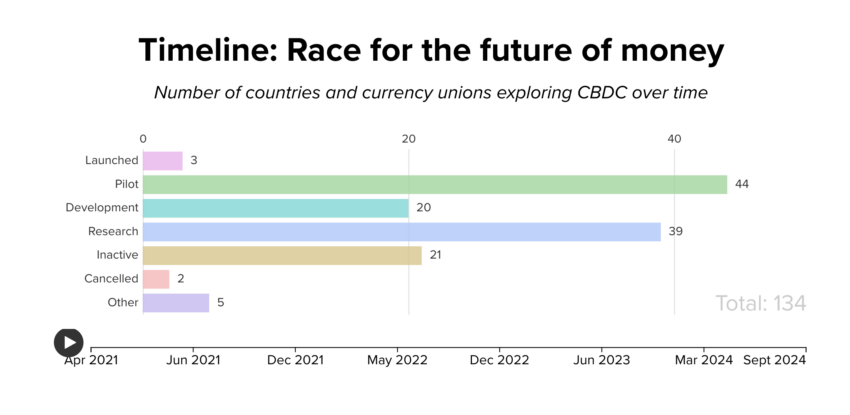Physical Address
304 North Cardinal St.
Dorchester Center, MA 02124
Physical Address
304 North Cardinal St.
Dorchester Center, MA 02124

Stablecoins are revolutionizing financial practices in emerging markets struggling with high inflation and economic instability.
Countries in Latin America and Africa are among the leaders in stablecoin adoption, driven by the development of financial technology ecosystems and increasing access to digital finance.
“The introduction of stablecoins into these markets reflects the significant demand for financial stability among populations facing currency depreciation,” said Kash Razzaghi, chief business development officer at Circle, citing a recent report. he said.
Discover how stablecoins are strengthening emerging markets amid high inflation and economic challenges; ensuring financial stability and affordability.
Stablecoins are not only digital assets, but also transformational financial instruments for various stakeholders, including financial institutions, companies and individual users. International payments facilitate and reduce the negative effects of currency fluctuations liquidity management offers solutions.
Kash Razzaghi highlights this trend: “In emerging markets, the regulatory environment for cryptocurrencies and stablecoins is improving.” Such adaptations are essential to support the widespread use of stablecoins and pave the way for dynamic financial ecosystems.
As the DeFi ecosystem developed, it integrated stablecoins into its infrastructure and provided affordable financial services in African countries, especially Nigeria. The country has become a prominent player, recording more than $30 billion in transactions through the DeFi protocol last year; it was stated in the Chainanalysis report.
“As the DeFi ecosystem expands, stablecoin-based credit and remittance solutions are reaching users in emerging markets and empowering previously excluded individuals,” Razzaghi said. he emphasizes. This change not only promotes inclusion, but also increases global economic participation.
In Argentina, where hyperinflation has exceeded 100%, the local population is increasingly relying on the dollar stablecoins USDT and USDC. The local trading volume of these stablecoins increases during periods of currency depreciation; This is an example of its role as a hedge against inflation.
According to a 2024 report by Chainanalysis, when the Argentine peso lost significant value, the demand for stablecoins increased dramatically; This reflects a strong trend driven by economic necessity.

Share of LATAM retail transaction volume by asset type; Comparison with the world average. Source: Chainanalysis.
Similar trends have been observed in Venezuela, where stablecoins are emerging as the primary medium of exchange. The renewable bolivar is increasingly being abandoned for transactions; users prefer stablecoins to purchase everyday goods and services. This further reinforces their importance in hyperinflationary environments.
While the potential of stablecoins is significant, there are several obstacles preventing widespread adoption, particularly in developing countries. Regulatory uncertainties and infrastructure issues pose serious challenges, while some segments of the population continue to face limited access to the Internet.
“Stablecoin projects and local communities are proactively engaging in educational initiatives to increase financial literacy and understanding of digital assets,” says Razzaghi. Programs such as workshops and community events are key to building trust and awareness among potential users.
The emergence of central bank digital currencies (CBDCs) brings new dynamics to the digital currency landscape. As government-backed digital currencies, CBDCs stand in contrast to privately issued stablecoins. Countries such as the Bahamas, Jamaica and Nigeria are showing great interest in CBDC development.

Number of countries and currency unions exploring CBDC over time. Source: Atlantic Council.
Despite the potential competition between CBDCs and stablecoins, Razzaghi believes that “USDC and other innovations already fulfill many of the functions that CBDCs want to provide.” Both systems offer unique features and have the potential to improve digital payment solutions in emerging markets.
As countries seek financial inclusion and stability, stablecoins stand out as a beacon of hope in economies suffering from high inflation and a lack of access to traditional banking. The growth of stablecoins and related educational initiatives point to a promising future for global finance by promoting participation and inclusiveness within the digital economy.